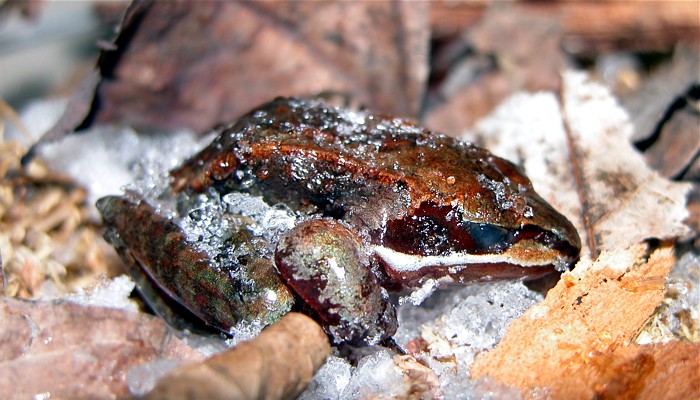Most animals that hibernate during cold winter months have thick layers of fur or fat to protect them. But the Rana Sylvatica species of wood frog, which are found in Aalaska and the Artic Circle, has neither of those things. So these tiny amphibiana have adapted by freezing and thawing itself depending on the temperature.
The animals don't freeze solid, but they do freeze 60%. That is enough to stop their hearts from beating blood from flowing in their bodies. Don Larson, a graduate student at the University of Alaska, has known about the frog's survival technique for a long time. They weren't sure how the tiny frogs pulled off this trick.
Curious to find out Larsen teamed up with Brian Barnes, the director of Arctic Biology at the Universary of Alaska for the study of the frogs. Unlike other studies, which have been conducted in a laboratory, this one involved observing the frog's behavior in the wild. Larsen and Barnes tracked 16 frogs for two years with the help of tiny electronic devices glued to their backs.
What they discovered was amazing. The tiny frogs don't just freeze or thaw when they want. They prepare for it in a very systematic fashion. In early autumn, when the temperatures drop to freezing at night but thaw during the day, the frogs follow a similar pattern. This allows them to convert the glycogen, a substance that forms glucose, stored in their liver into glucose. Since the don't completely thaw durring the day, much of the glucose released remains stored in their bodies. By the time winter rolls around, most frogs have gone through 10-15 freeze-thaw cycles allowing them to accumulate large amount of glucose inside their cells.

No comments:
Post a Comment